Complete Solutions to Comprehension of chapter ELECTRIC POTENTIAL of Class 12 book with complete answers and questions
| Class 12 | PHYSICS |
| Chapter | ELECTRIC POTENTIAL |
| CENGAGE PHYSICS | Comprehension |
| Number Of Questions | 31 |
| Academic Year | 2023-24 |
Two point charges are located on the x - axis : `q_1 = -e` at `x = 0` and `q_2 = + e` at `x = a`.
The work done by an external force to bring a third point charge `q_3 = +e` from infinity to `x = 2a` is.07:33View SolutionTwo point charges are located on the x - axis : `q_1 = -e` at `x = 0` and `q_2 = + e` at `x = a` and `q_3 = + e` at `x = 2a`.
The total potential energy of the system of three charges.03:52View SolutionA small metal sphere, carrying a net charge `q_1 = -2 mu C`, is held in a stationary position by insulating supports. A second small metal sphere, with a net charge of `q_2 = -8 mu C` and mass `1.50 g`, is projected toward `q_1`. When the two spheres are `0.800 m` apart, `q_2` is moving toward `q_1` with speed `20 ms^-1` as shown in (Fig. 3.151). Assume that the two spheres can be treated as point charges. You can ignore the force of gravity.
 .
.
The speed of `q_2` when the spheres are `0.400 m` apart is.04:34View SolutionA small metal sphere, carrying a net charge `q_1 = -2 mu C`, is held in a stationary position by insulating supports. A second small metal sphere, with a net charge of `q_2 = -8 mu C` and mass `1.50 g`, is projected toward `q_1`. When the two spheres are `0.800 m` apart, `q_2` is moving toward `q_1` with speed `20 ms^-1` as shown in (Fig. 3.151). Assume that the two spheres can be treated as point charges. You can ignore the force of gravity.
 .
.
How close does `q_2` get to `q_1` ?05:21View SolutionFour charges `+q, +q, -q, and -q` are placed, respectively, at the corners `A,B,C, and D` of a square of side `a`, arranged in the given order. `E and F` are the midpoints of sides `BC and CD`, respectively, `O` is the center of square.
The electric field at `O` is.03:39View SolutionFour charges `+q, +q, -q, and -q` are placed, respectively, at the corners `A,B,C, and D` of a square of side `a`, arranged in the given order. `E and F` are the midpoints of sides `BC and CD`, respectively, `O` is the center of square.
The electric potential at `O` is.01:14View SolutionFour charges `+q, +q, -q, and -q` are placed, respectively, at the corners `A,B,C, and D` of a square of side `a`, arranged in the given order. `E and F` are the midpoints of sides `BC and CD`, respectively, `O` is the center of square.
The work done in carrying a charge `e` from `O` to E is.02:01View SolutionFour charges `+q, +q, -q, and -q` are placed, respectively, at the corners `A,B,C, and D` of a square of side `a`, arranged in the given order. `E and F` are the midpoints of sides `BC and CD`, respectively, `O` is the center of square.
The work done in carrying a charge `e` from `O` to `F` is.04:29View SolutionA charge 'Q' is distributed over two concentric hollow spheres of radii 'r' and 'R' `(gtr)` such that the surface densities are equal. Find the potential at the common centre.
08:49View SolutionA charge Q is distributed over two concentric hollow spheres of radii r and `R (gt r)` such that the surface charge densities are equal. Find the potential at the common centre.
04:17View SolutionThe electrical potential function for an electrical field directed parallel to the x-axis is shown in the given graph.
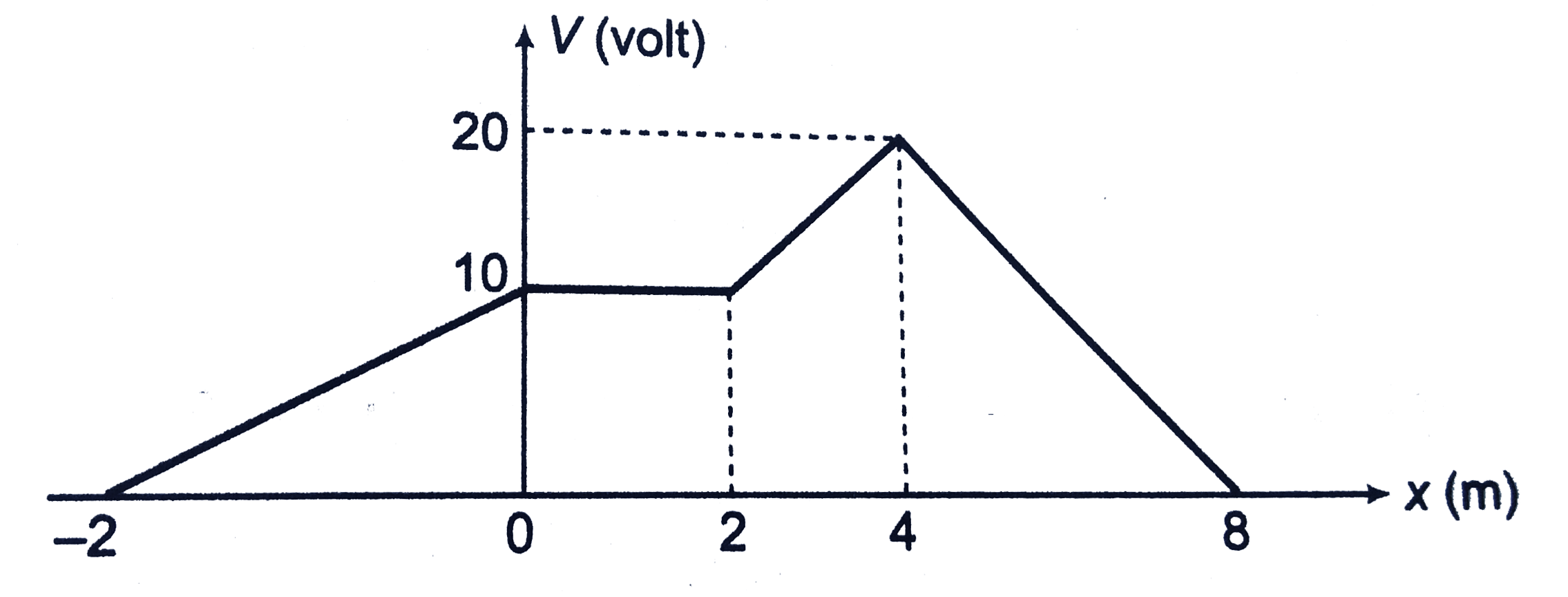 Draw the graph of electric field strength. 03:23View Solution
Draw the graph of electric field strength. 03:23View SolutionThe electrical potential function for an electrical field directed parallel to the x - axis is shown in (Fig. 3.152).
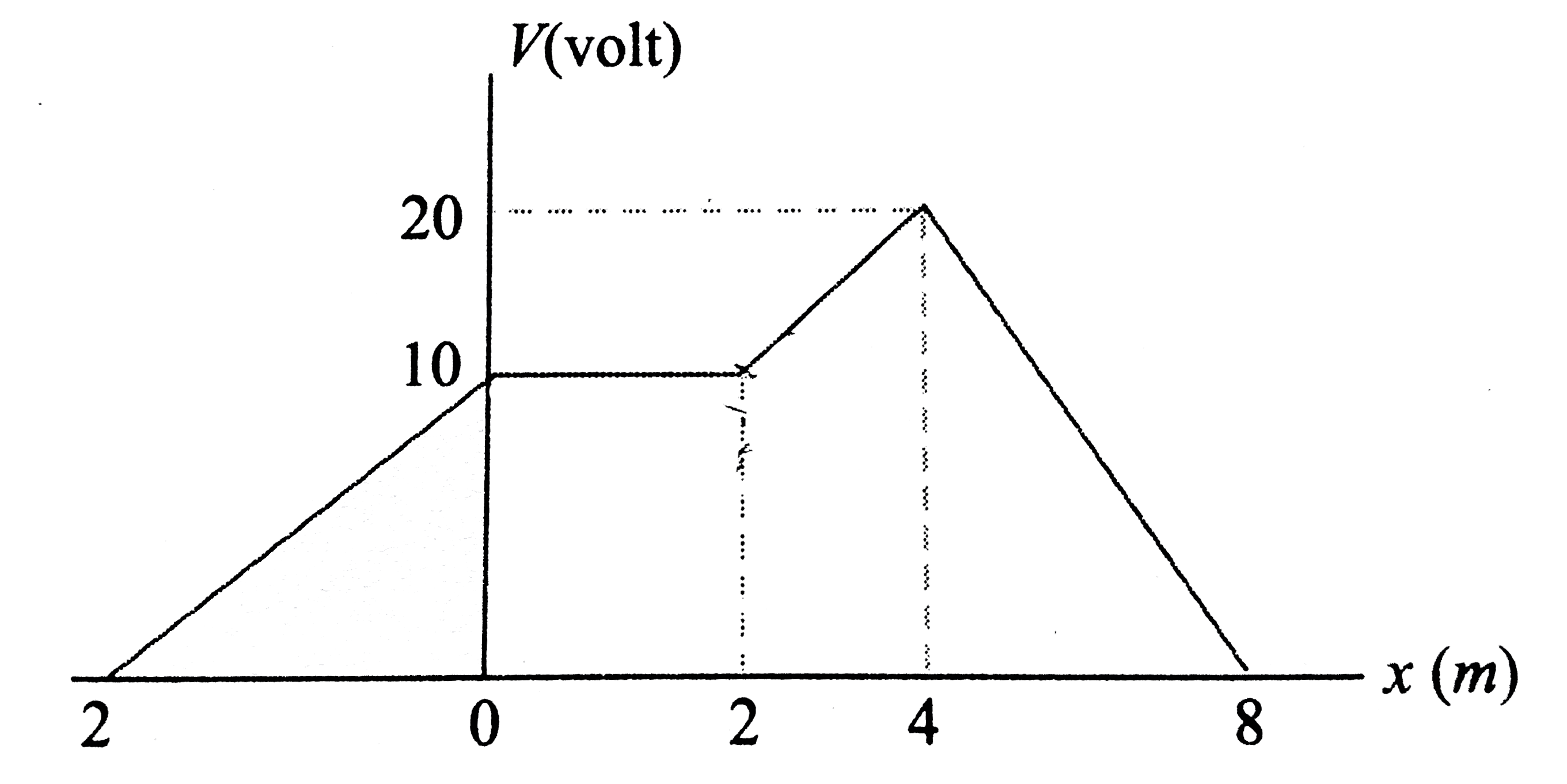 .
.
The magnitude of the electric field in the x - direction in the interval `4 le x le 8` is02:00View SolutionThe electrical potential function for an electrical field directed parallel to the x-axis is shown in the given graph.
 Draw the graph of electric field strength. 03:23View Solution
Draw the graph of electric field strength. 03:23View SolutionA uniform electric field of `100 Vm^-1` is directed at `30^(@)` with the positive x - axis as shown in (Fig. 3.153). `O A = 2 m` and `O B = 4 m`.
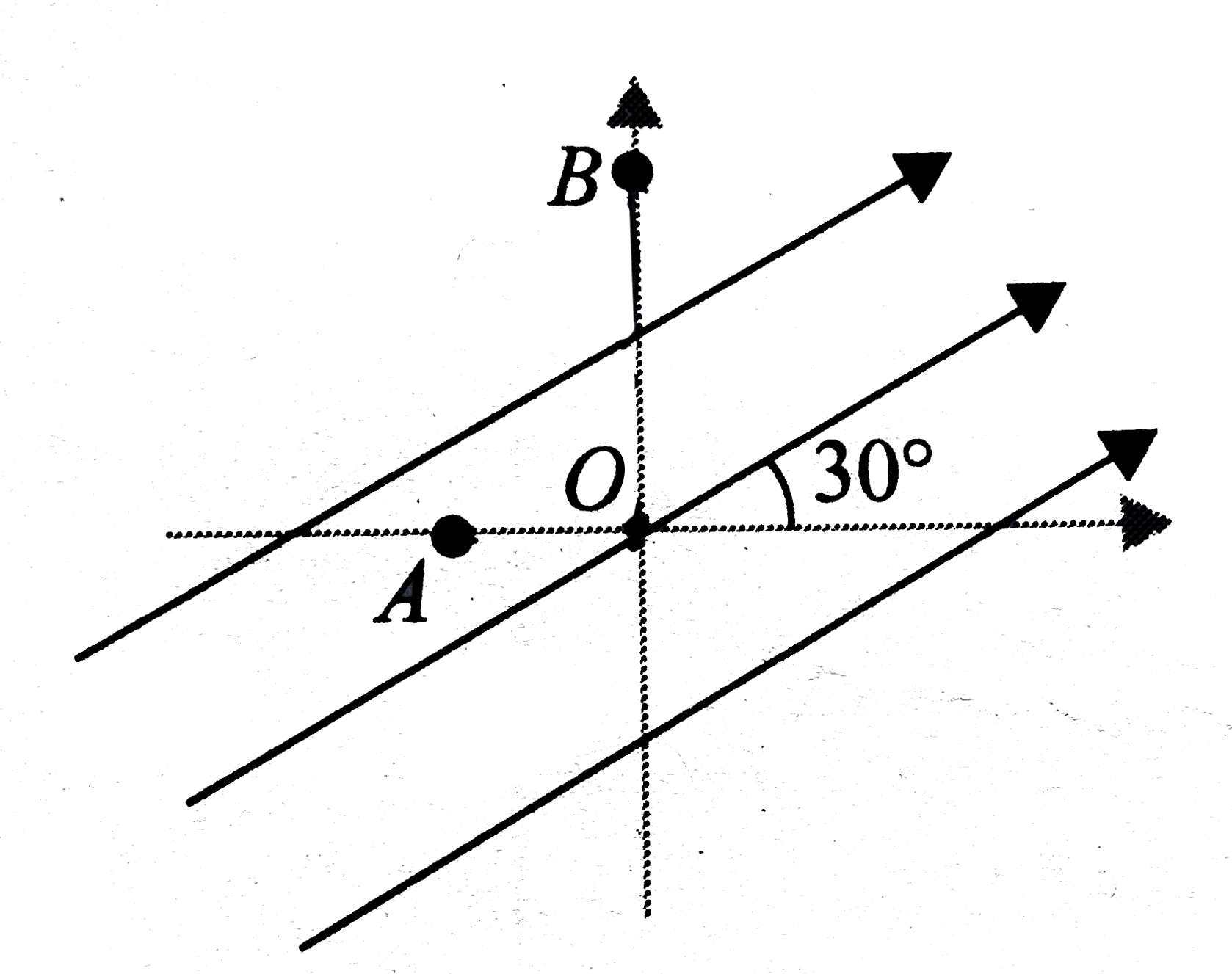 .
.
The potential difference `V_O - V_A` is.02:47View SolutionA uniform electric field of `100 Vm^-1` is directed at `30^(@)` with the positive x - axis as shown in (Fig. 3.153). `O A = 2 m` and `O B = 4 m`.
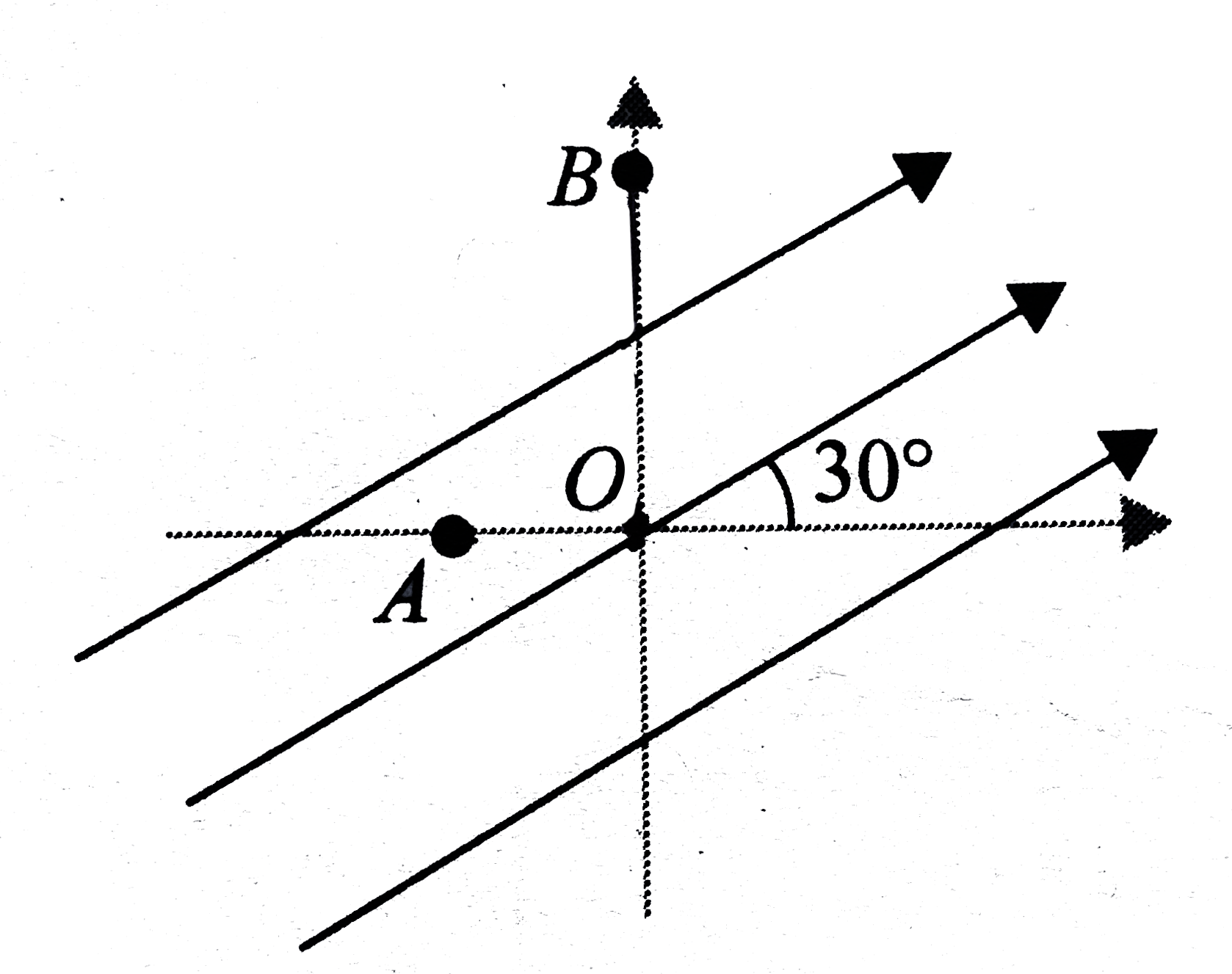 .
.
The potential difference `V_B - V_A` is.03:53View SolutionThe electric potential varies in space according to the relation `V = 3 x + 4 y`. A particle of mass `0.1 kg` starts from rest from point `(2,3.2)` under the influence of this field. The charge on the particle is `+1 mu C`. Assume `V` and (x,y) are in `S I` units.
The component of electric field in the x - direction `(E_x)` is.01:18View SolutionThe electric potential varies in space according to the relation `V = 3 x + 4 y`. A particle of mass `0.1 kg` starts from rest from point `(2,3.2)` under the influence of this field. The charge on the particle is `+1 mu C`. Assume `V` and (x,y) are in `S I` units.
The component of electric field in the y - direction `(E_y)` is.00:41View SolutionThe electric potential varies in space according to the relation `V = 3 x + 4 y`. A particle of mass `0.1 kg` starts from rest from point `(2,3.2)` under the influence of this field. The charge on the particle is `+1 mu C`. Assume `V` and (x,y) are in `S I` units.
The time taken to cross the x - axis is.04:31View SolutionThe electric potential varies in space according to the relation `V = 3 x + 4 y`. A particle of mass `0.1 kg` starts from rest from point `(2,3.2)` under the influence of this field. The charge on the particle is `+1 mu C`. Assume `V` and (x,y) are in `S I` units.
The velocity of the particle when it crosses the x - axis is06:41View SolutionThree concentric spherical metallic shells `A, B, and C` of radii `a,b, and c(a lt b lt c)` have surface charge densities `sigma, -sigma` and `sigma`, respectively.
If `V_(A), V_(B)` and `V_(C)` are potential of shells A, B and C, respectively, match the columns
`{:("Column A",,,"Column B"),(a. V_(A),,i.,sigma/epsilon_(0)[(a^(2)-b^(2)+c^(2))/c]),(b. V_(B),,ii.,sigma^(2)/epsilon_(0)[a^(2)/b-b+c]),(c. V_(C),,iii.,sigma/epsilon_(0)[a-b+c]):}`06:28View SolutionThree concentric spherical metallic shells A, B and C of radii a, b and c (a lt b ltc) have surface charge densities `sigma`, `-sigma` and `sigma` respectively. If the shells A and C are at the same potential, obtain the relation between the radii a, b and c.
08:04View SolutionWe have an isolated conducting spherical shell of radius `10 cm`. Some positive charge is given to it so that the resulting electric field has a maximum intensity of `1.8 xx 10^6 NC^-1`. The same amount of negative charge is given to another isolated conducting spherical shell of radius `20 cm`. Now, the first shell is placed inside the second so that both are concentric as shown in (Fig. 3.154).
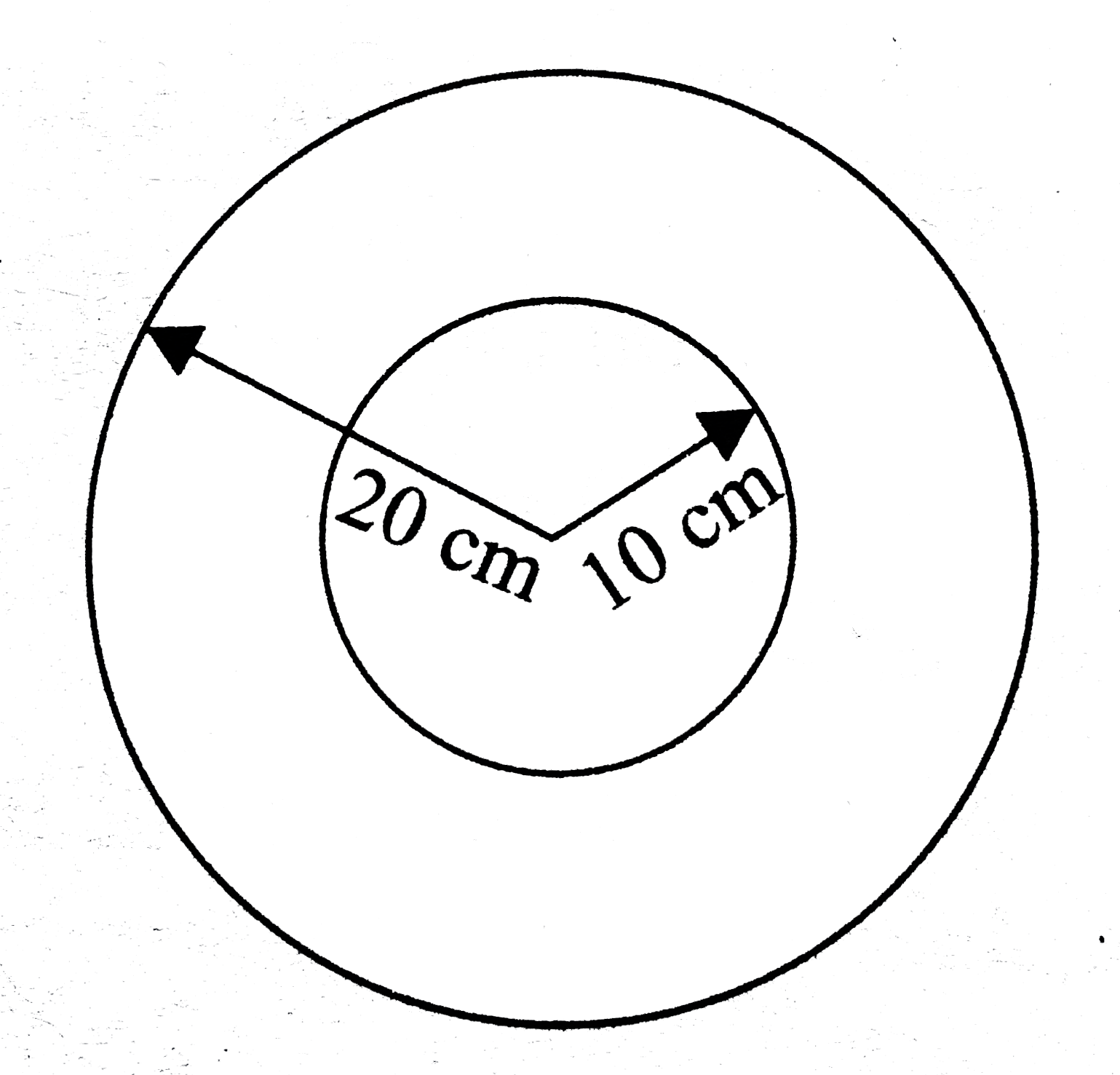 .
.
The electric potential at any point inside the first shell is.04:07View SolutionWe have an isolated conducting spherical shell of radius `10 cm`. Some positive charge is given to it so that the resulting electric field has a maximum intensity of `1.8 xx 10^6 NC^-1`. The same amount of negative charge is given to another isolated conducting spherical shell of radius `20 cm`. Now, the first shell is placed inside the second so that both are concentric as shown in (Fig. 3.154).
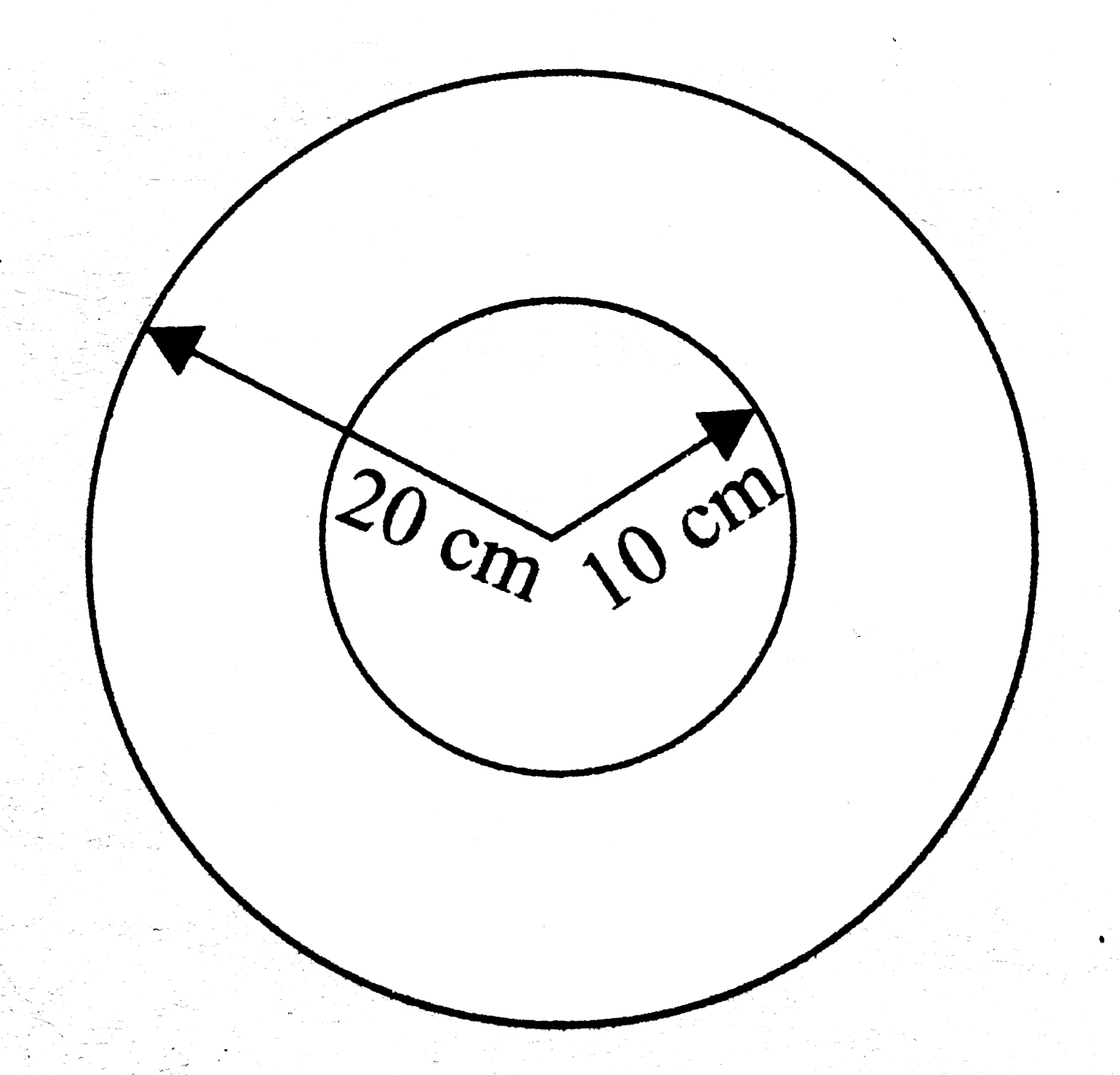 .
.
The electric field intensity just inside the outer sphere.02:02View SolutionWe have an isolated conducting spherical shell of radius `10 cm`. Some positive charge is given to it so that the resulting electric field has a maximum intensity of `1.8 xx 10^6 NC^-1`. The same amount of negative charge is given to another isolated conducting spherical shell of radius `20 cm`. Now, the first shell is placed inside the second so that both are concentric as shown in (Fig. 3.154).
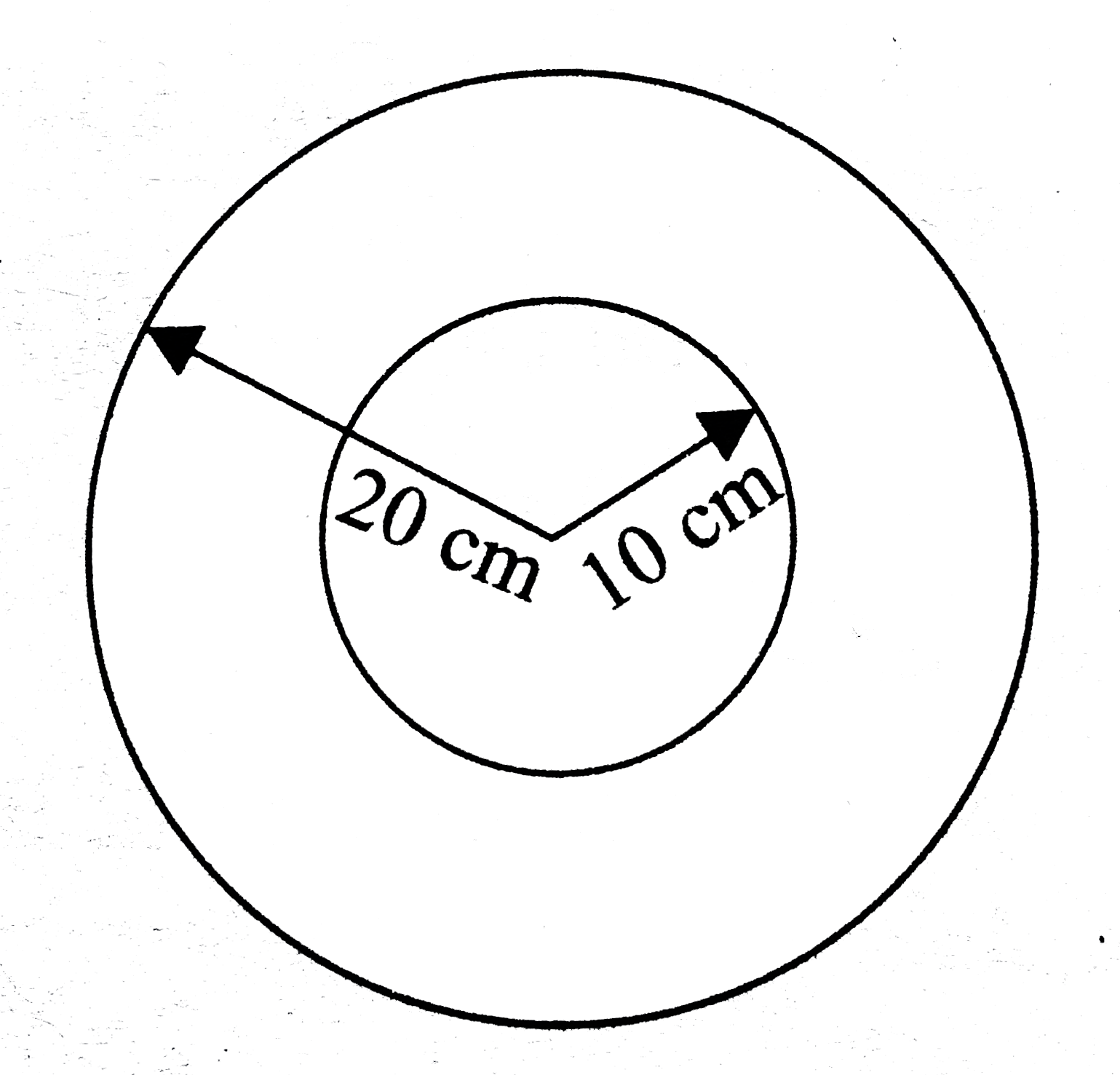 .
.
The electrostatic energy stored in the system is.03:57View SolutionWe have an isolated conducting spherical shell of radius `10 cm`. Some positive charge is given to it so that the resulting electric field has a maximum intensity of `1.8 xx 10^6 NC^-1`. The same amount of negative charge is given to another isolated conducting spherical shell of radius `20 cm`. Now, the first shell is placed inside the second so that both are concentric as shown in (Fig. 3.154).
 .
.
If both the spheres are connected by a conducting wire, then.01:01View SolutionIn a certain region, electric field `E` exists along the x - axis which is uniform. Given `B = 2 sqrt(3) m` and `BC = 4 m`. Points A, B, and C are in `x y` plane.
 .
.
Find the potential difference `V_A - V_B` between the points `A and B`.02:43View SolutionIn a certain region, electric field `E` exists along the x - axis which is uniform. Given `B = 2 sqrt(3) m` and `BC = 4 m`. Points A, B, and C are in `x y` plane.
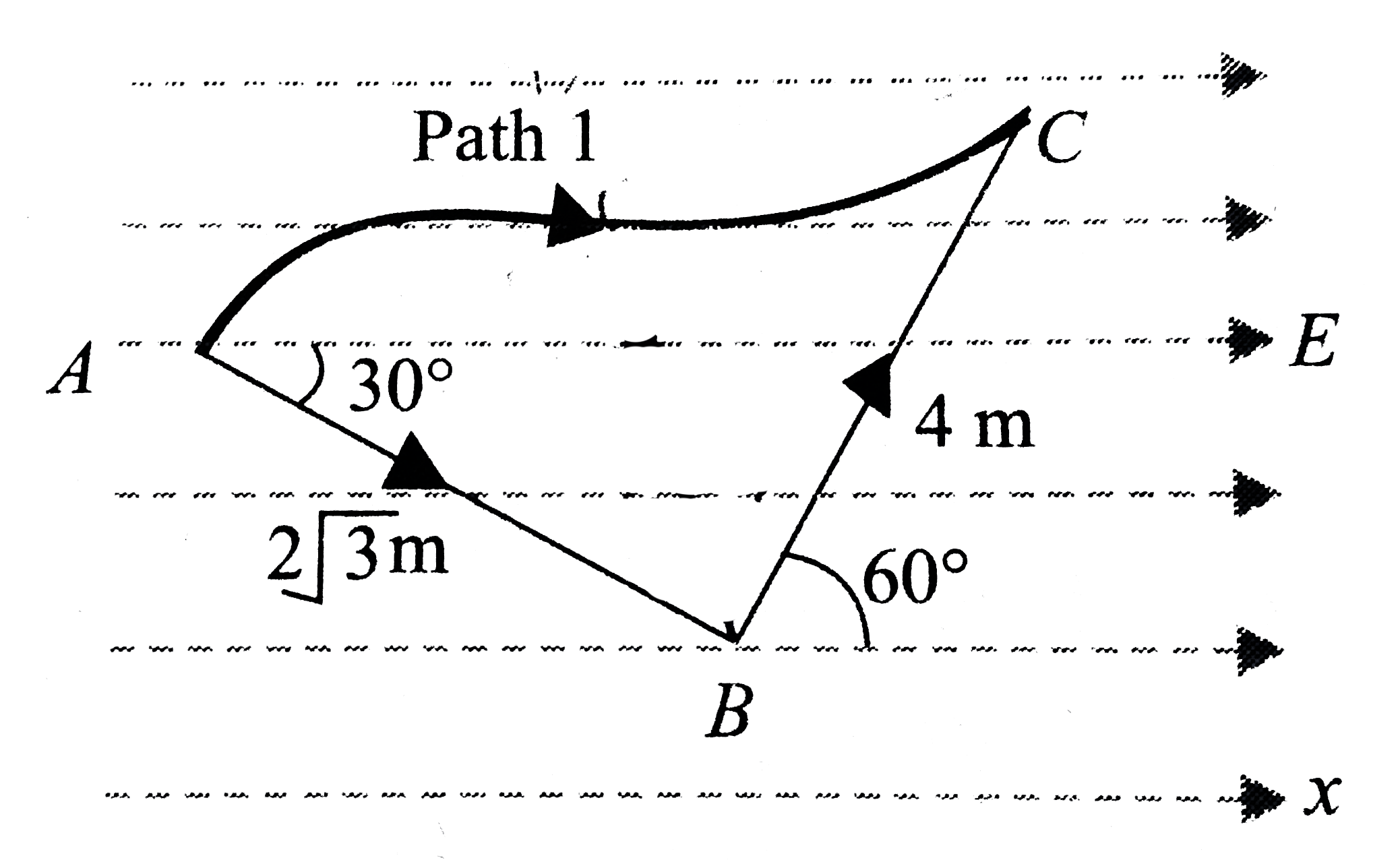 .
.
find the potential difference `V_C - V_B` between the points `C and B`.01:35View SolutionIn a certain region, electric field `E` exists along the x - axis which is uniform. Given `B = 2 sqrt(3) m` and `BC = 4 m`. Points A, B, and C are in `x y` plane.
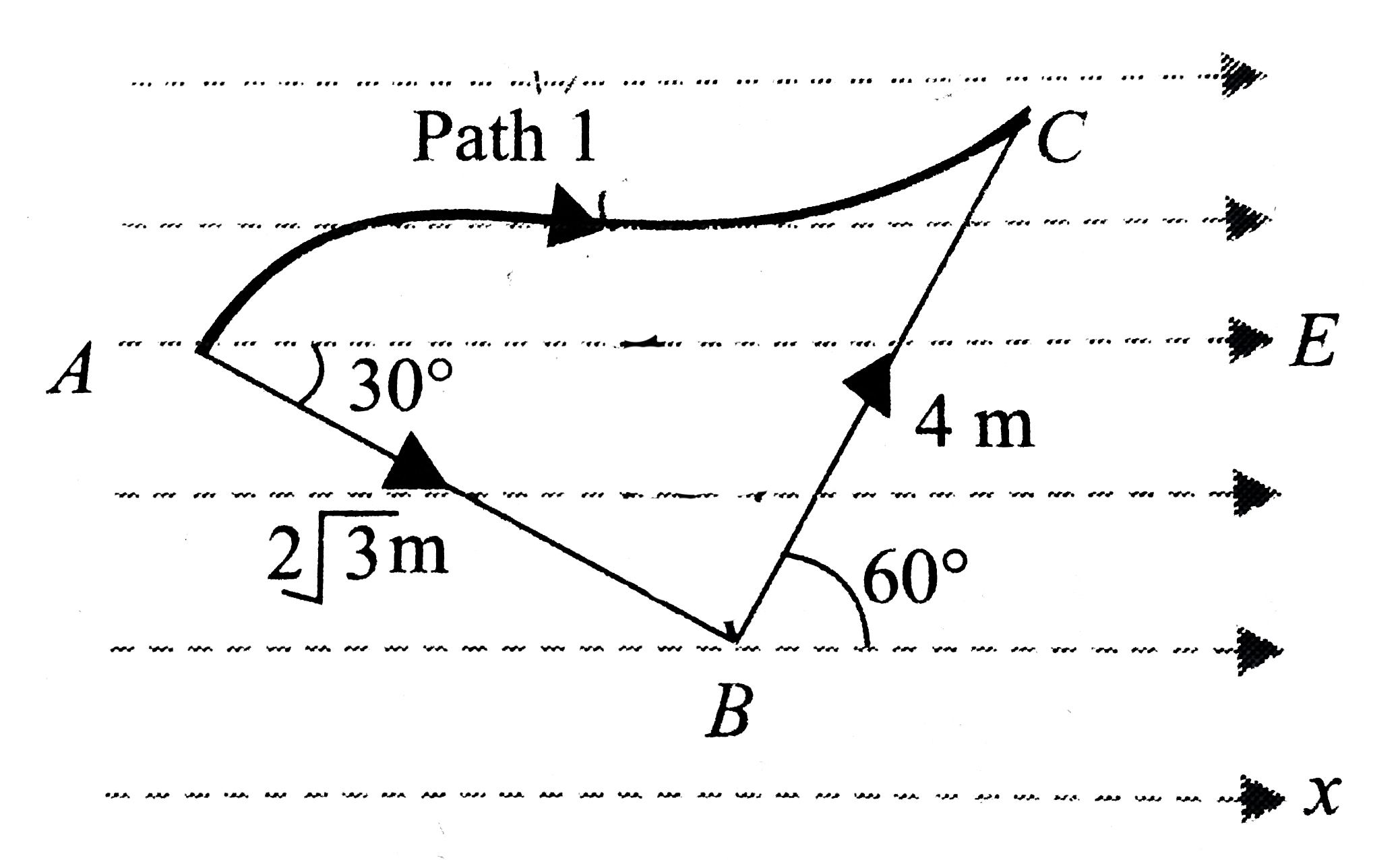 .
.
A charged particle `q` is moved from A to C as shown in path `1`. What is the work done by electric field in this process ?01:52View SolutionAn uniform electric field of strength `E` exists in a region. An electron of mass `m` enters a point A perpendicular to x - axis with velocity `V`. It moves through the electric field and exists at point `B`. The components of velocity at `B` are shown in (Fig. 3.156). At `B` the y - component of velocity remain uncharged.
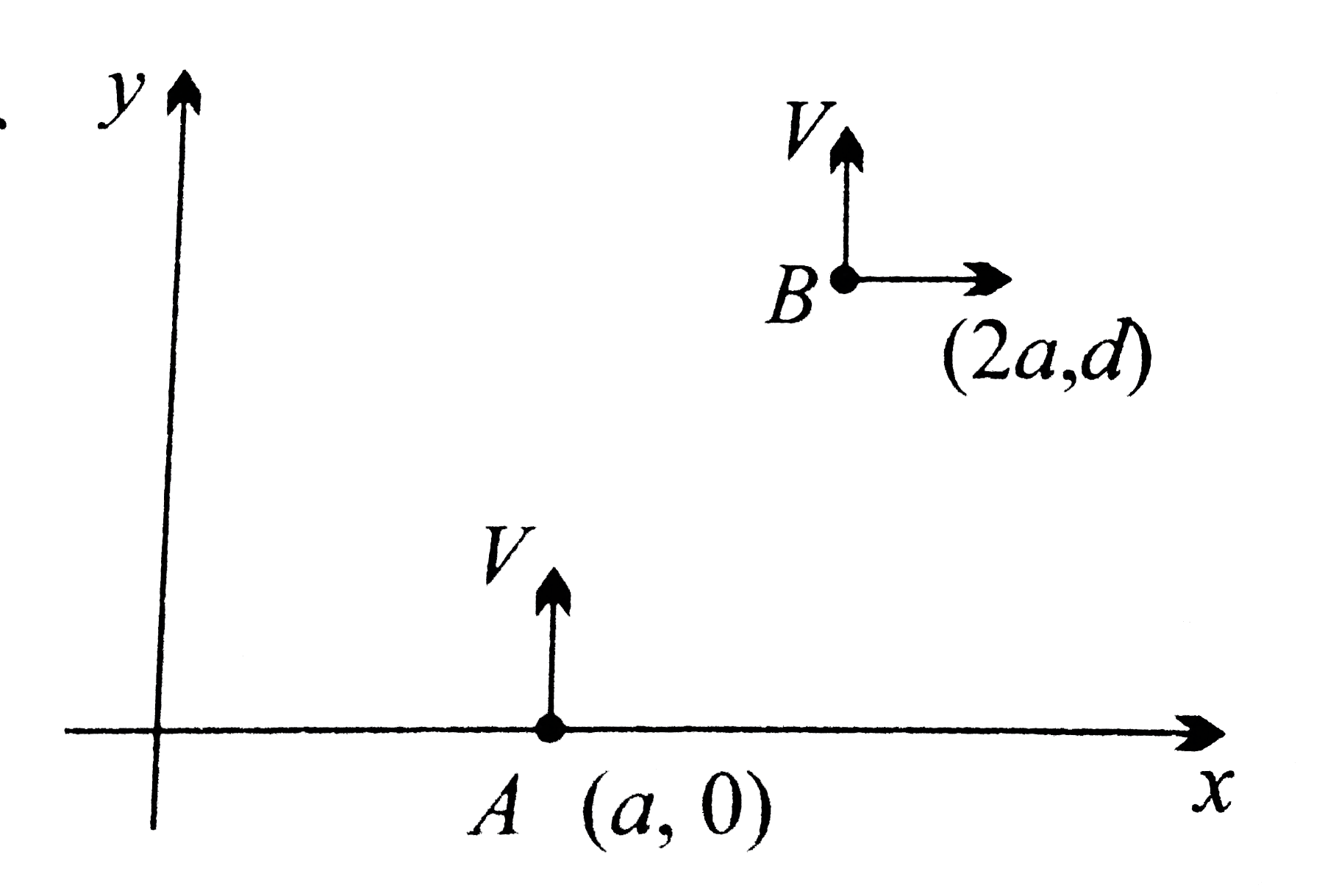 .
.
Find electric field.View SolutionAn uniform electric field of strength `E` exists in a region. An electron of mass `m` enters a point A perpendicular to x - axis with velocity `V`. It moves through the electric field and exists at point `B`. The components of velocity at `B` are shown in (Fig. 3.156). At `B` the y - component of velocity remain uncharged.
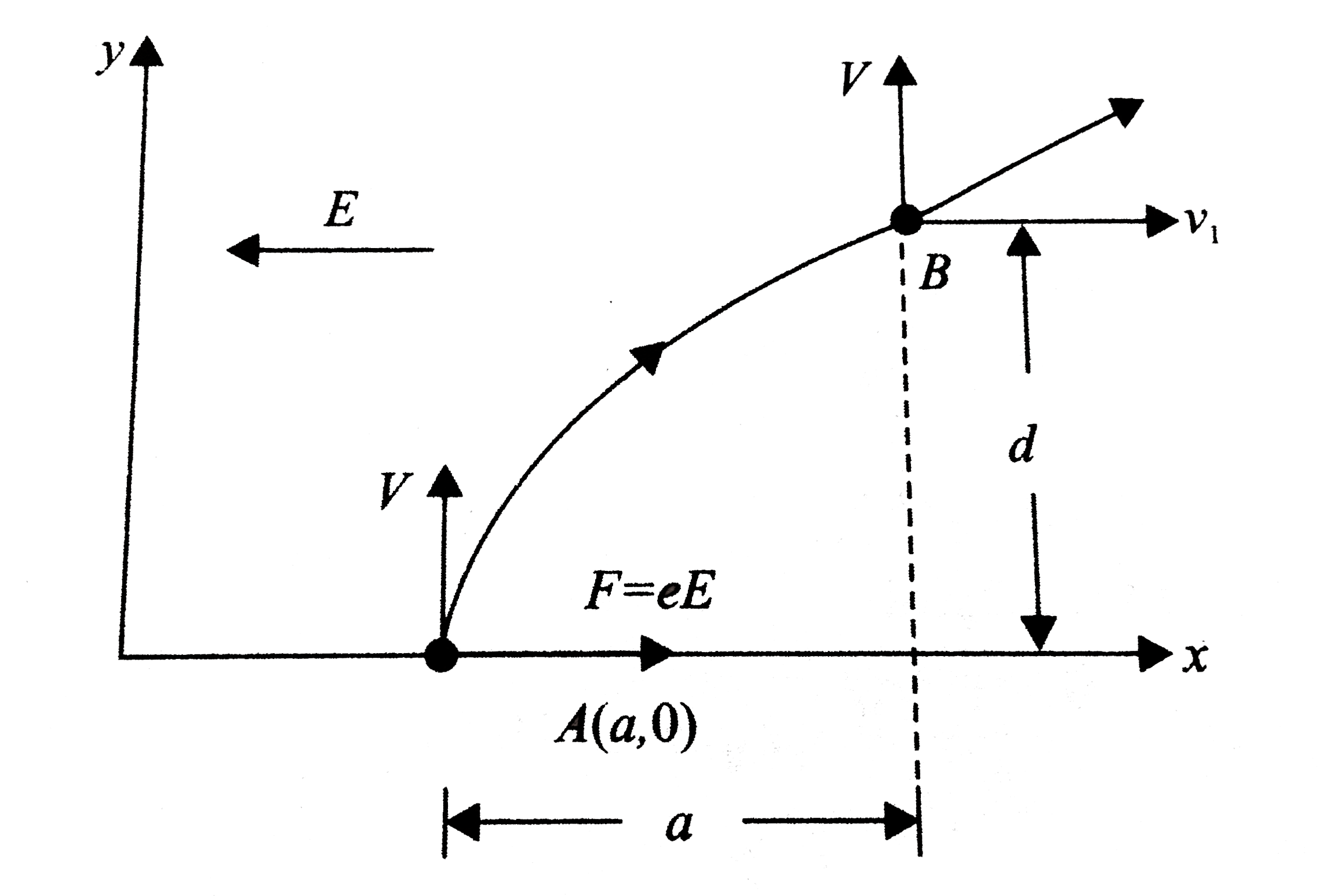 .
.
Find velocity at `B`.06:53View SolutionAn uniform electric field of strength `E` exists in a region. An electron of mass `m` enters a point A perpendicular to x - axis with velocity `V`. It moves through the electric field and exists at point `B`. The components of velocity at `B` are shown in (Fig. 3.156). At `B` the y - component of velocity remain uncharged.
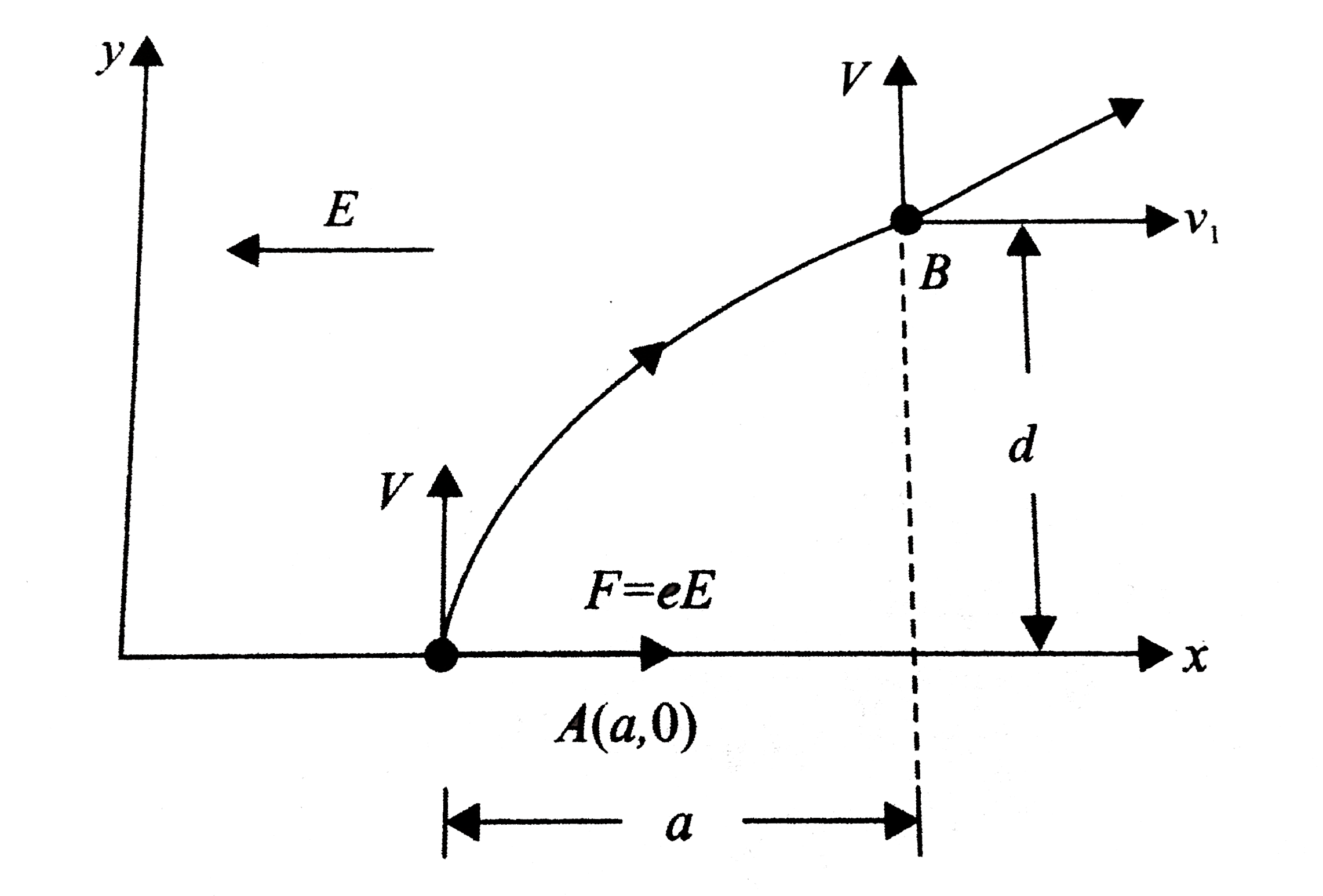
Find the rate of work done by the field at `B`.07:40View Solution
Comprehension questions and complete solutions for chapter ELECTRIC POTENTIAL of CENGAGE PHYSICS (HINGLISH) of Class 12
